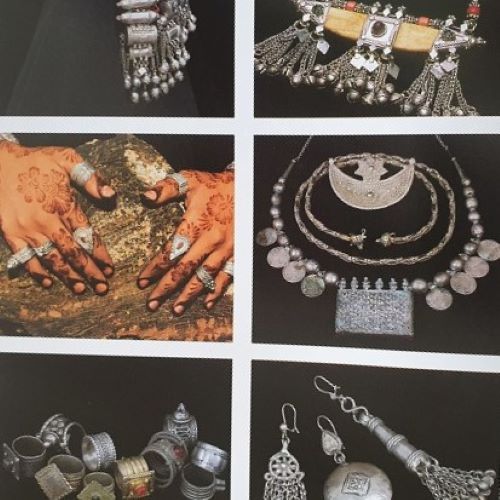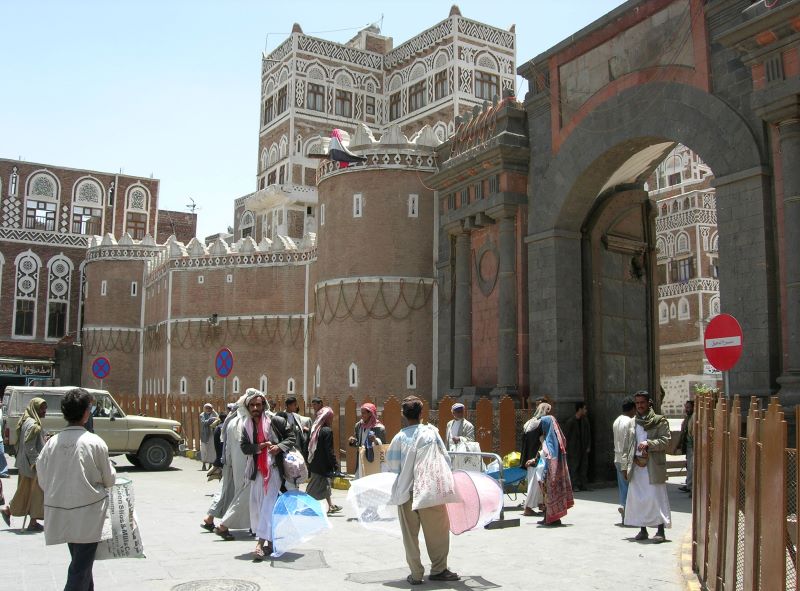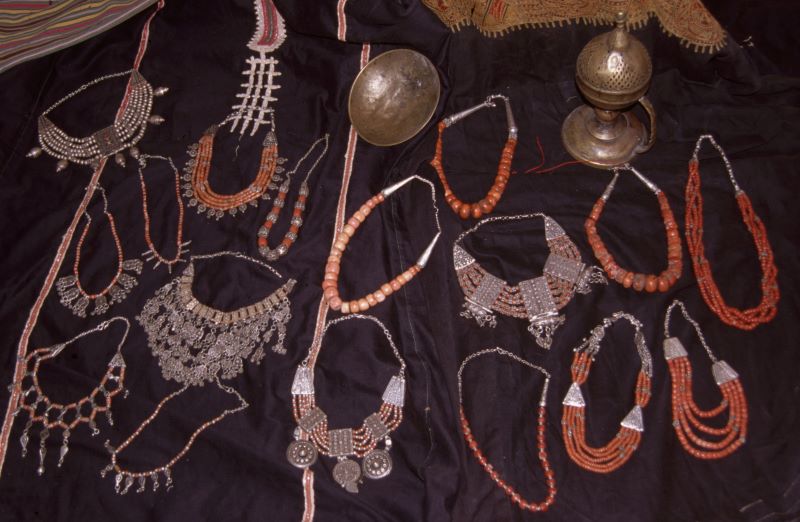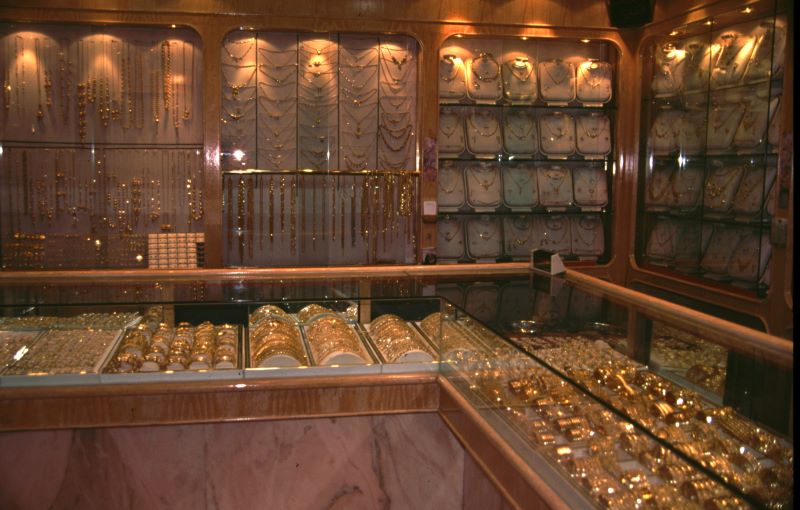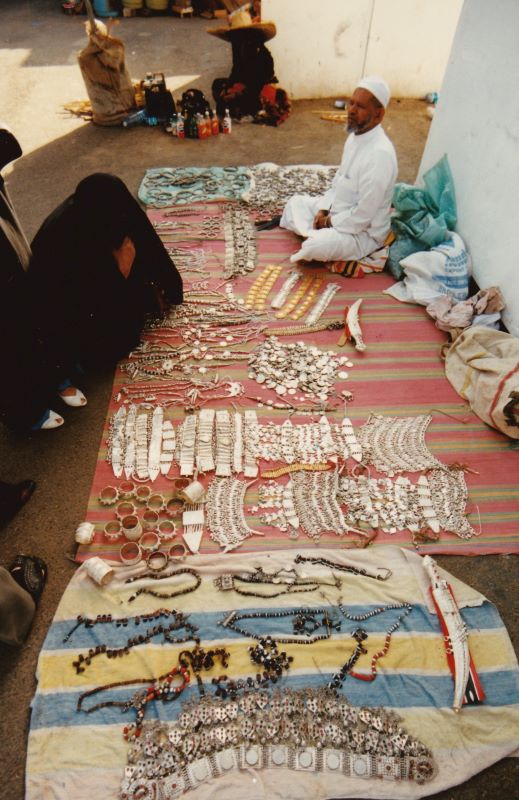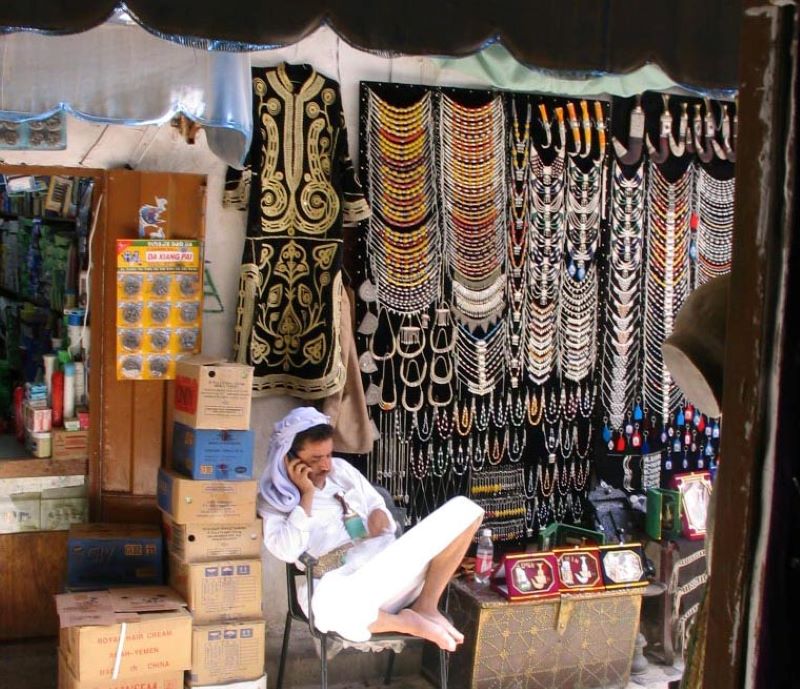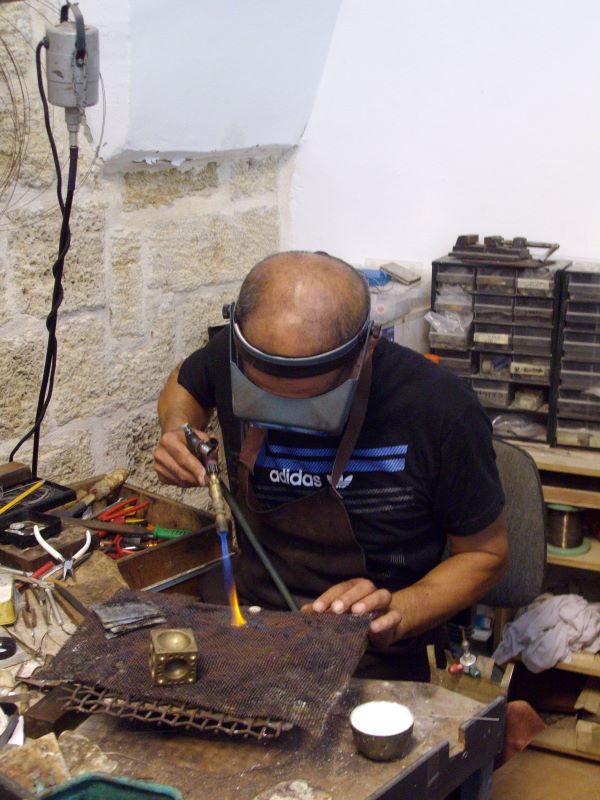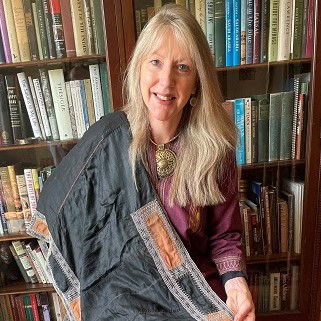Brid Beeler moved to Saudi Arabia in 1989 and stayed for a decade. Her career then led her to live and work in Yemen and Oman and work for some of the world’s top travel companies. She currently heads Brid Beeler Travel Ltd and travels in and out of the region regularly. This is the second in a two-part series where Brid shares her personal experience and knowledge of the history and fate of Yemeni silversmiths and their craft. Read the first article here.
Yemen opens to the world
For most westerners, Yemen was a little-known entity until well into the second half of the twentieth century as it had been since the Sabaean era and the rule of Bilquis, the Queen of Sheba. Aden and South Yemen had been a British Protectorate before becoming a communist state supported by the Soviet Union in 1967. North Yemen had been ruled by the Zaydi Imams for over a thousand years until 1962 when a revolution brought about the fall of Imam rule and the establishment of a democratic government. As embassies and some international NGOs began to trickle into the new democratic state, outsiders had their first opportunity to visit this land. Western contacts and travel to Yemen increased significantly in 1990 when North and South Yemen united under a government based in Sana’a.
Travellers fortunate enough to visit Yemen in the earlier days found a country awash with silver jewellery. From the mountains of the Yemeni highlands to Shibam in the Hadhramawt, each region had distinctive craftsmanship and its own silversmiths who were sought out for their workmanship. The Yemenis also knew how to work stones and resin. Amber in all its shades of golden to orange and red, coral in shades of white, pink, red and black, turquoise, a matrix style (that came from Saudi Arabia), carnelian, red glass, and agate in a myriad of shades were worked, mostly in a cabochon style.
My first introduction to Yemeni silver
My first serious encounter with Yemeni silver was an assault on the senses. I travelled to Yemen on a three-week-long road trip after the Gulf War of 1991. We had driven south from Riyadh and, as the border post at Najran was closed, we headed out into the Empty Quarter (Ar Rub Al Khali) towards Sharoura, navigating by compass and with some rather dated topographic maps. Our first night in Yemen was in the walled town of Al Buga a northern desert outpost with border officials and customs checks. The trip was to be a life-defining moment, with my love affair with Yemeni silver jewellery beginning as we travelled all over Northern Yemen over three weeks. The craftsmanship and the array of amber, carnelian, agate, coral, red glass, and freshwater pearls were all available as part of stunningly beautiful necklaces, rings, and bracelets. The larger, more elaborate pieces were no longer making their way across borders into Saudi Arabia where a lucrative expatriate market existed.
Yemeni silver in Saudi Arabia
When western expatriates began to work in Saudi Arabia, many started collecting traditional silver jewellery found in the souqs, with little knowledge of what they were buying. Heather Coyler Ross came to the rescue in the 1980s with two extremely well-researched books on Bedouin jewellery of the Arabian Peninsula, primarily covering Saudi Arabia. While they provided a fascinating insight into the jewellery, they did not address the jewellery from Yemen. This is despite many of the silversmiths in the Kingdom being from Yemen. At that time, Yemenis enjoyed a privileged status in the Kingdom. They could cross the border without visas, own property, and establish businesses with ease.
Silver and politics
Sadly, this changed with the onset of the first Gulf War when Saddam Hussein invaded Kuwait in August 1990. Yemenis were forced to leave Saudi Arabia in retaliation for their government’s political decision over the Iraqi invasion. Previously, the souqs of the Asir and Jeddah were full of Yemeni traditional jewellery, less so in Riyadh, and expatriates naturally sought out these pieces. After the Gulf War, however, it became evident quite quickly that the jewellery was becoming scarce, and Yemen was becoming isolated with access to markets in the west no longer easily accessible.
In response, and within a decade, influential Yemeni businessmen with the support of the Yemeni government began a charm offensive promoting Yemeni culture abroad in some of the capitals of Europe and Washington DC. This was a time of pride for Yemen as the Yemeni ‘flowermen’ performed with their traditional garlands of flowers and herbs while dressed in their traditional woven mowaz (sarong or futa).
Yemen being the birthplace of coffee, Kohlan coffee from the outskirts of Sana’a was brought to Washington DC and sold in the Smithsonian Institution’s marketplace, along with frankincense and myrrh, colourful Yemeni woven baskets, and flat woven Kilim style carpets. Befitting its cultural importance, Yemeni silver was prominently displayed for sale at these joint government-sponsored events and every piece of jewellery was sold by the Yemeni silversmiths to an appreciative American audience. Unfortunately, before this promotion of the cultural riches and arts of Yemen could achieve much success, terrorism became a part of our vocabulary and the tide shifted once more against Yemen and these opportunities to travel abroad to support government events became increasingly difficult.
Loss of heritage through conflict
China has had a long influence in Yemen through various cultural, technical, and economic development projects. Yemeni jewellers were able to travel to China for three to six months to participate in trade shows where they could sell their jewellery. But most Yemeni jewellers would only take what could easily be sold and began adapting designs to the latest fashion pieces seen in glossy western magazines. The internet has made this easier with images on social media easily available for all. Even in the war-torn Yemen of today, with its frequent electrical outages, the internet continues to be a major influence in households with generators.
But as the current war-driven economic collapse puts pressure on families, those who know the value of their jewellery understandably put their family’s wellbeing first and may be left with no choice but to melt down valuable pieces for cash or, if there is a way to get them to the west, sell them on the international market. As is to be expected, there has been an increase in the illegal trade of antique Yemeni artefacts from the Sabaean era popping up from time to time for sale in the west. The sad reality is that many countries face a loss of heritage as a result of conflict and Yemen is not the first nor will it be the last country to do so.
The fate of Jewish silversmiths
As to what happened to all the Yemeni Jews who travelled to Israel under operation Magic Carpet (see the first article in this series) – most remained in Israel, some went to the United States, and a few returned to Yemen.
My first encounter with Yemeni Jews was in the highlands around Hajjah in 1991. In subsequent years, I lived and worked in Yemen on two occasions over almost six years and I would see small numbers from time to time, dressed as a Yemeni in traditional mowaz, riding motorbikes, chewing qat, and otherwise being part of Yemeni society. I left Yemen during Christmas week 2011 as the country was already in conflict, just before the tribes converged upon the capital of Sana’a blocking every access in and out of the city. I do not know the fate of the remaining Yemeni Jews, but during the thousand years of Zaydi Imam rule, Yemeni Jews were protected. Given the many tragedies of the recent conflict, one cannot help but be concerned.
While Muslim silversmiths continue to make traditional silver jewellery for the local market, the market for such items is much reduced, as is the number of artisans practising their craft. Consumer tastes have changed as well, with a younger audience increasingly wanting modern items rather than the older styles favoured by previous generations. Yemenis are resilient, but they face unsurmountable challenges. Given the state of Yemen’s economy, how long can these skilled artisans continue practising their craft? A valuable heritage is at risk, and it will be a devastating loss for all of us if markets cannot be found for their exquisite traditional jewellery.
About the author
In 2015, Brid Beeler managed the Smithsonian Institution’s Sackler Gallery tour in Saudi Arabia, Oman and Qatar, which followed Saudi Arabia’s internationally acclaimed Roads of Arabia exhibition. Brid facilitated the History Channel’s Yemen documentary Digging for the Truth – The Real Queen of Sheba. She also participated in the multi-level cultural project involving the Smithsonian and the Yemen and US governments that resulted in the publication of Caravan Kingdoms: Yemen and the Ancient Incense Trade. With Crossing the Line Films, she facilitated logistics and key components for their award-winning documentary on the annual Qashqai migration in Iran, which was aired by National Geographic under the title Last Chance Journeys: Iran. Brid also consulted on a UNICEF, World Food Program project advocating for girls’ education in Yemen.
She has presented papers on eco-tourism in the region and was one of only a handful of women selected to speak at the first International Conference on Eco-Tourism in Saudi Arabia. Her other speaking engagements have included The Ethnic Silver Jewelry of the Arabian Peninsula at the Chester Beatty Library in Dublin Castle. She currently contributes monthly to aramcoexpats.com. Her collecting, which began in the souqs of Riyadh before extending to Yemen, Oman, and further afield, focuses on old silver jewellery, semi-precious stones, beadwork, and textiles from the Arabian Peninsula
*Copyright to all images belongs to Brid Beeler unless otherwise indicated. Reproduced here with permission. Feature image from Marjorie Ransom’s book Silver Treasures from the land of Sheba.
Read the first article in this series here.
Read more articles by Brid Beeler
- Bukhnug – A Chance Encounter
- ‘Usabah: A Delicate Silver Circlet
- Libat Mazamir – A Yemeni Wedding Necklace
